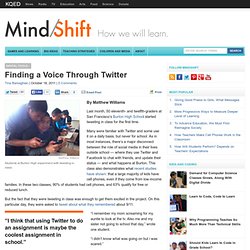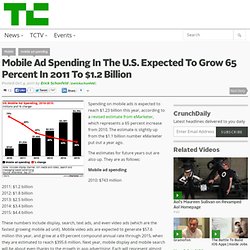

Crossing the Digital Divide: Bridges and Barriers to Digital Inclusion. The term digital divide was coined in the mid-1990s as a way to describe the gap in equity between those who have access to computers and the Internet and those who do not.

Today, the conversation has shifted to this question: How do we define access when the price of personal computers and related technologies has dropped dramatically over the years and, according to the Pew Internet & American Life Project, 95 percent of Americans between the ages of 18 and 29 use the Internet? And all of this is happening while we are in the midst of an explosive rise in mobile technology. "Wireless is being sold as the bridge across the digital divide," says Amalia Deloney, grassroots policy director at the Center for Media Justice.
"But what we know is that wireless is not a substitute for a wired connection. " It's very difficult to apply for a job or college, for instance, on a mobile phone. Finding a Voice Through Twitter. Digital Tools.

Tools for learning: Mobile phones and authentic learning tasks. Text a Librarian: Text Messaging Reference Software. Make your own iPhone App. Mobile Web Best Practices. More Google Wallet merchants are live. Now you can pay AND save in a single tap. We’re hearing from people at check-out counters throughout the country that paying with your phone is a little like magic.

Just look at the ecstatic reaction on the faces of our friends who made their first Google Wallet purchases last Thursday. Today, our partners American Eagle Outfitters, The Container Store, Foot Locker, Guess, Jamba Juice, Macy’s, OfficeMax and Toys“R”Us are rolling out an even better Google Wallet experience. For the first time ever in the U.S., at these select stores, you can not only pay but also redeem coupons and/or earn rewards points—all with a single tap of your phone. What Smartphone Internet Usage Means for Libraries. eBooks have been the hot topic in libraryland for a few months now and with good reason.

It seems like every other day there is some new revelation that makes us either jump for joy or groan in agony. While these conversations and revelations have been happening, there has been another revolution underfoot. The Pew, Internet, and American Life Project released a report last month on the usage of smartphones. We have known that smartphone ownership was increasing dramatically, and that use was up among minorities, and this report confirms the trends. According to the study, 35% of adults own a smartphone with the numbers of ownership being slightly higher at 44% for African-Americans and Latinos. The numbers cited above confirm the trends we are seeing, but the trend that the report revealed that I think is even more important for libraries is that for some of the population, their phone is their Internet access.
eBooks & Learning. The birth of the Kindle Fire and the death of the public library. On Wednesday, Amazon is expected to release or announce the Kindle Fire, an Android-based 7-inch touchscreen device that will embrace, extend, and enhance Amazon’s bag of highly-successful tricks.

The Amazon Appstore will provide easy access to thousands of cheap or free apps. Amazon MP3 and Cloud Drive will be built right in — kind of like iOS and iCloud, but with streaming, web access, and cross-platform compatibility. Top Mobile Activities in the U.S. – February 11, 2011Posted in: Mobile, News & Information, U.S.

The comScore 2010 U.S. Digital Year in Review is now available for download. Text messaging lead as the top mobile activity with 68 percent of Americans texting in December 2010, while more than half took a photo with their mobile device (52.4 percent) and 39.5 percent of subscribers accessed news and information. Although application usage continued to grow in 2010, slightly more Americans (36.4 percent) used their mobile browser than accessed applications (34.4 percent).
Mobile Ad Spending In The U.S. Expected To Grow 65 Percent In 2011 To $1.2 Billion. Spending on mobile ads is expected to reach $1.23 billion this year, according to a revised estimate from eMarketer, which represents a 65 percent increase from 2010.

The estimate is slightly up from the $1.1 billion number eMarketer put out a year ago. How the Millennial Generation Uses Mobile. Millennials — that is, American consumers between ages 18 and 34 — are a mobile generation.

That much is clear from the infographic below. According to data collected by location-based ad network JiWire, Millennials own an average of 2.4 Internet-connected devices. Of those who connect to JiWire's free Wi-Fi networks, 62% percent are using smartphones and nearly a third are using tablets. Twenty-eight percent use location-based apps multiple times per day for locating stores (54%) and points of interests (46%), as well as connecting with others (40%) and checking in (32%). Surprisingly, there is one area where older generations are more active on mobile. How do these findings align with your own mobile behavior?